Over at my day job, I recently looked at the distribution of citations that 2012 and 2013 Nature Chemistry papers (Articles, Reviews and Perspectives) received in 2014 – essentially the citations that are used to calculate the 2014 impact factor of the journal. I would recommend having a read of that post before ploughing through this one. I’ve now done the analysis for five other general chemistry journals, just to see how they all stack up. In each case, the data is from Web of Science (All Databases) and is refined by document types ‘Article’ and ‘Review’. In the Sceptical Chymist post I also did the calculation for Nature Chemistry after removing the Review articles from the data, but haven’t done that here.
So, here is what Nature Chemistry looks like:

And here’s JACS, Angewandte Chemie (the International Edition), Chemical Science, Chem Comm and Chem Eur J (note that because of the wildly different volume of content across the 6 journals, the scale on the y-axis changes quite significantly – as does the smoothness of the distribution; also, for the Chem Comm and Chem Eur J, I have included magnified sections of the later portions of the distributions):

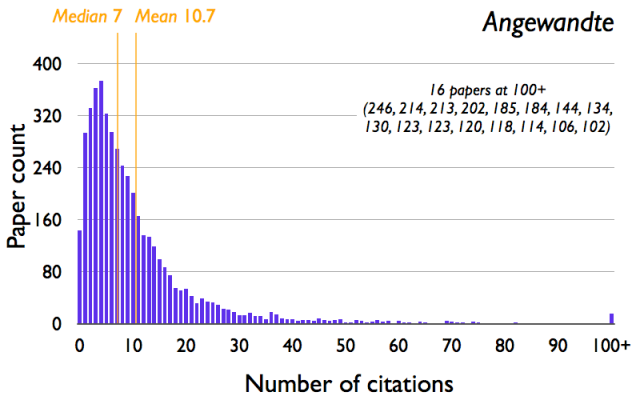
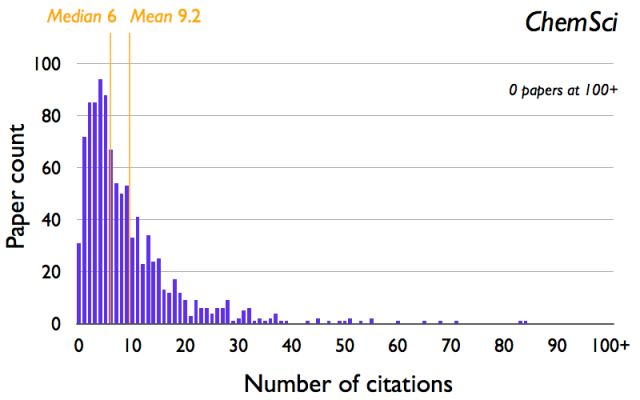
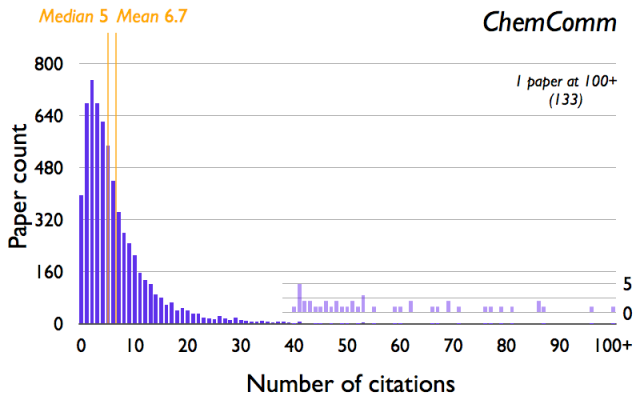
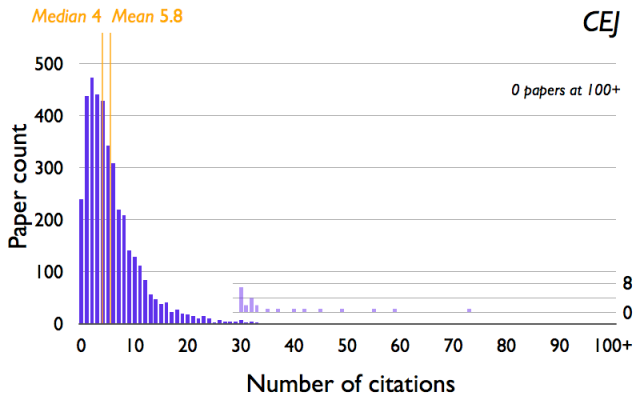
One way that you can compare journals that publish vastly different numbers of papers is to look at the percentage of published items that have more than a given number of citations. For example, each journal has 100% of papers with 0 or more citations, but what does the percentage drop to when you consider papers with 1 or more citations? If 5% of a journal’s papers have 0 citations in 2014, then the second point plotted on the graph would appear at 95% (i.e., 95% of papers would have one or more citation). If you do this analysis for the 6 journals above, this is what you find:
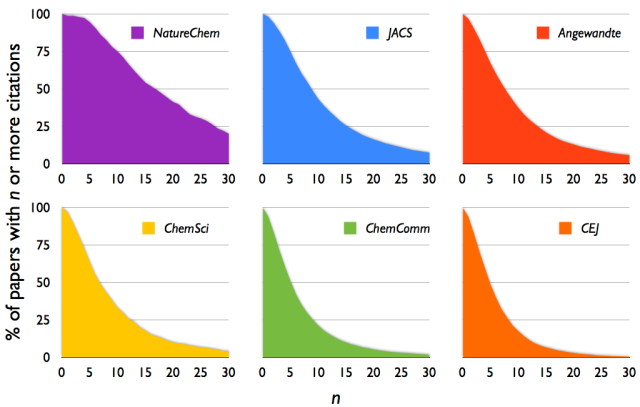
If you stack these graphs on top of one another, you can then compare (for the most part) across the 6 journals:
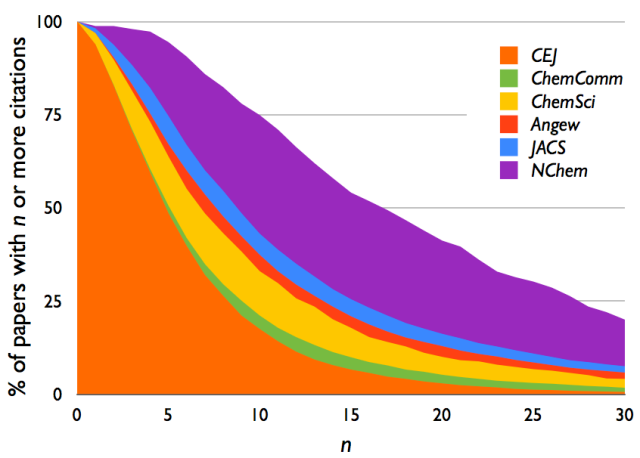
It’s interesting to note that JACS compares favourably to Angewandte, even though Angewandte publishes far more review-type articles, and also note how Chemical Science is not all that far behind Angewandte when you do this sort of analysis.

Pingback: The Great Curve II: Citation distributions and reverse engineering the JIF | quantixed
Pingback: Imperfect impact | Chemical connections
Pingback: Credit where credit is due | Chemical connections
Pingback: 別盲目追求期刊影響因子了 – Enago英論閣 部落格:論文撰寫與科學研究發表支援
Pingback: Generating journal citation distributions from open data – Andrew Lee Hufton